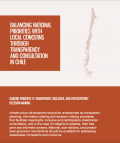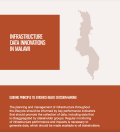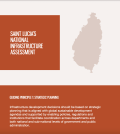Economic growth in many countries has up to now been based on the linear economic “take-make-dispose” model. This has led to a tremendous increase in worldwide extraction of material resources (biomass, fossil fuels, metals, and non-metallic minerals) in recent decades. In 2017, more than half of the global material resource demand originated in Asia and the Pacific. While having contributed to strong economic growth and improved welfare, resource extraction and processing also have major adverse effects on the planet and on people. Resource extraction and processing are responsible for more than 90 percent of both global biodiversity loss and water stress, and are major drivers of climate change. In emerging economies, particularly in Asia and Pacific, the rapid in-crease in material resource extraction is mainly driven by the expansion of infrastructure. This massive infrastructure build-up accounts for the largest share of total climate change impacts in Asia and Pacific.
This collection of case studies presents exemplary frameworks and measures in China, Japan, and the Republic of Korea that mainstream circular economic principles through sustainable infrastructure in the building, transport and energy sectors. It outlines how these countries incorporate the principle of circularity in policy frameworks and infra-structure development, and how they are building the sustainable infrastructure that is necessary to establish circular economies. The report analyzes the development of green buildings in Shenzhen, China, elaborates on the Japanese “Regional Circular and Ecological Sphere” concept by providing a case study on the development of an integrated lightrail transit system in Utsunomiya City, and presents insights into the Korean “Future Waste Recycling System” for used electric vehicle batteries and decommissioned solar PV panels.



